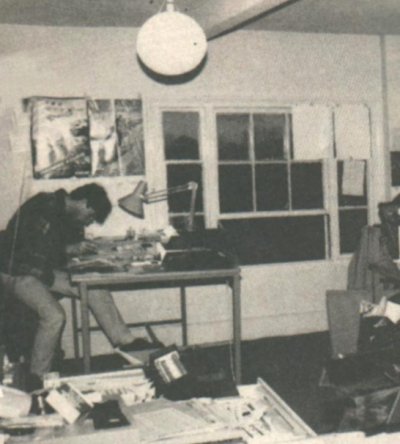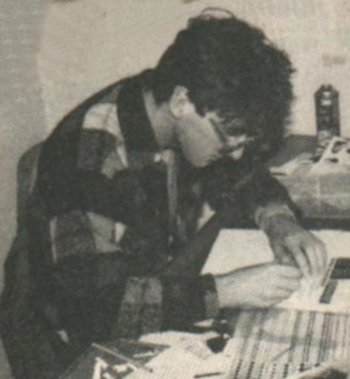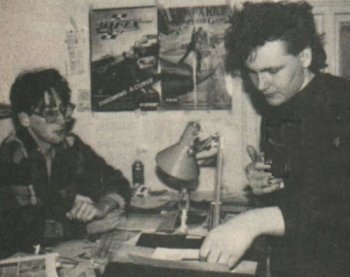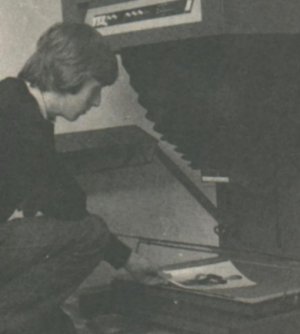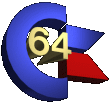| 7. Putting it down on paper The art team (they also work on sister publications CRASH and AMTIX !) is headed by David Western, Art Director Dick Shiner and Art Supremo, Oliver Frey. All three actually do layout as well as their official jobs of directing and guiding the other members, who consist of Gordon Druce, Tony Lorton and Bryan Clements. One of the most vital functions is performed by one of Newsfield’s longest employed members, 18-year old Matthew Uffindell, who used to write reviews for CRASH before becoming the process camera operator - more of him in a mo! The artwork is layed out on ‘grid sheets’, paper a little larger than the finished page, marked up with the finished page edges, text column widths and other useful information. The grids are printed in a pale blue ink which the process camera ‘can’t see’ when the page is photographed. The typesetting is cut up into suitable column lengths and stuck down in place together with the PMTs (more of that in a mo!) When a page is completed, it is set aside to ‘go under the camera’. Close liaison with editorial is essential at this stage to ensure that the right things happen! |
|
|
|
|
 |
|
|
|
8. The role of the process camera ZZAP! (and Newsfield’s other publications) is unusual in as much almost all the technical processes involved, except colour origination and printing, are done in-house. Much of this takes place on the Process Cameras - there are three of them - under Matthew’s watchful eye. Black and white photographs cannot be used in their original state because the entire printing process (even for colour) works on purely black or white - no in between grays like photographs have. So the first thing that must happen is to convert the original ‘continuous tone’ photograph to a ‘halftone’ (also called a PMT- Photo Mechanica Tint, a ‘tint’ being closely placed dots). The photo is placed on the copyboard of the process camera and reproduced by being re-photographed through a specially designed tint screen. The result is a copy of the original but made up entirety of black and white dots. The process camera can also alter the original 's size from between 25% and 400% at the same time, so the finished result will fit the layout artist’s design for the page. Similarly, text can be enlarged or reduced if required, or ‘reversed out’ (white letters on black) by the same machine. Once pages have been completed, they have to be converted to ‘finished film’ from which the printer will eventually make the printing plates. The finished page artwork is placed under the process camera and photographed in much the same way as the PMTs were made, except without the tint screen in place, since all the elements now on the page are alreedy in just black and white. The resulting exposure goes onto film negative rather than PMT paper, and is put through a complex processor which develops, fixes and dries the image In 60 seconds. The film negative is then ‘spotted’ to get rid of any white pin holes caused by dust, and is ready to go off to the printer. |
|
|
Prev Page |
Next page |
